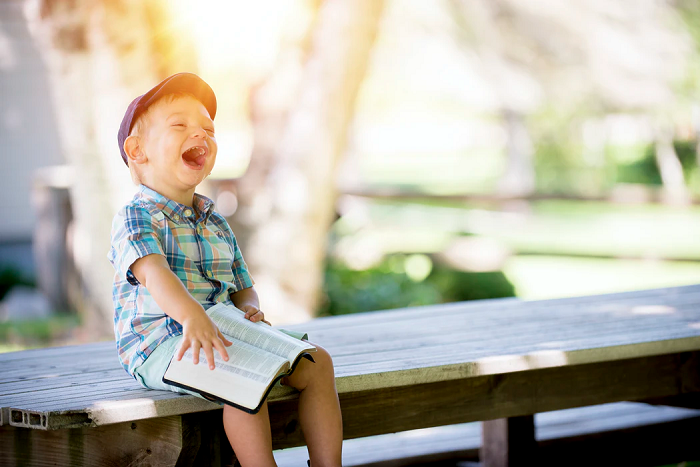We all are aware of the fact that reading is a habit that improves your child’s ability to think and work. But how do you instill it in your child at early stage.
Why you should read to babies?
A lot of researches have observed that reading to your 4 months old baby increases the likelihood of parents continue reading to babies as they get older. The earlier your baby starts, the earlier his language skills develop.
Reading stages as per ages
New Born to 6 months old
At this stage opt for reading chunky board books, soft fabric books or vinyl bath books.
Your baby might not understand a thing or two but what he enjoys is your company and your voice. To show enthusiasm towards this ritual the baby may widen his eyes, calming or smiling and kicking. The baby will try to get sense of the book by grabbing or chewing the book. When they look away, close the eyes, or start to cry then take a break.
6 to 9 months old
Good short and simple stories with colored illustrations –board books are perfect.
This old babies explore books by looking and touching. By the time baby turns 9 months old it would become easy to recognize certain stories and pictures. Mouthing the book is a good sign showing that baby is interested in it.
9 to 18 months old
Board books with stories having catchy rhymes and phrases are the best. At this age pictures of other babies or familiar animals excite babies.
By this time your toddler might have one favorite story or favorite character. When one year has passed start questions about the story such as “Where is the cat?” and look at his pointing gestures.
18 to 24 months old
Long stories with complex plots are good to go now. Humor and silly rhymes are major interests at this stage.
Your toddler may have learned to walk and thus he might run away too often. Don’t worry you have to put in efforts and keep reading. As long as you keep reading he keeps listening and he will come back to reconnect.
Drive the energy to connect him with story by asking him to roar like the lion in the story. He must have become capable of labeling objects, like saying “Bhow” when seeing a dog in the story. Ask your child to turn pages. Ask questions related to pictures in the story like “Who’s painting the house?”
24 to 36 months
Kids are now ready for normal pages book and more engaging plots with humor, rhymes and complex illustrations. Non-fictional stories are going to be a good add-on.
Your child is now ready for tougher questions such as “What do you think the girl must be thinking?” and try to connect your kids with the story like this “The boy in the story rode the slide in the park. What did you ride in the park today?” Don’t be surprised if he wants to listen to one particular story again and again.



